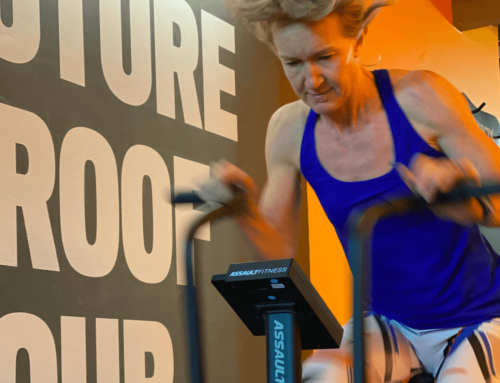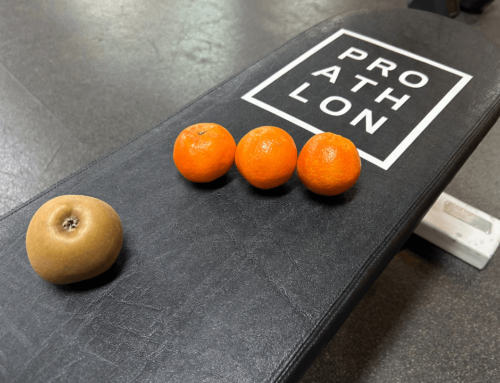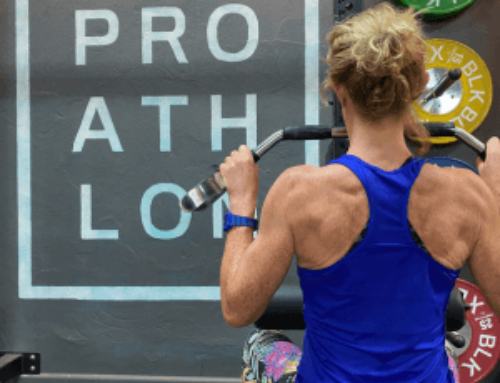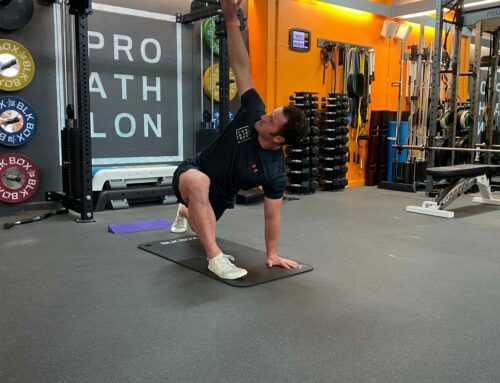Before I start, post workout muscle soreness is not an indicator of a good workout, nor is it a sign that you are increasing muscle mass and getting stronger.
Delayed onset muscle soreness (DOMS) is the soreness you feel after training and is caused by microscopic tears in the muscle cell. It is common for the soreness to kick in 12 hours after training and can last on average 72hrs (but sometimes longer).
The reality is that DOMS is uncomfortable and inconvenient. And can also reduce the amount of training you do per week, essentially slowing your progress.
So, if you are constantly sore after training we recommend that you focus on the strategies outlined below. These will help reduce the level of soreness you experience, speed up the recovery process and get you ready for the next training session.
Factors that affect DOMS
Eccentric contractions: Eccentric contractions produce more DOMS than concentric contractions. An eccentric contraction is when a muscle is lengthening under tension, think the lowering phase of a squat or the lowering phase on a chest press.
Our recommendations to reduce DOMS: programme more exercises that have a dominant concentric contraction and reduced eccentric contraction such as sled push, sled pull & deadlifts. That said, you should not avoid eccentric contractions as they have huge strength and injury prevention benefits. The key here is to gradually increase them over time.
New to training: If you are new to training then there is a high chance that you will be sore post training. If I’m being honest, if you’ve never trained before just looking at a dumbbell will cause muscle soreness. Bear in mind that your muscles are not accustomed or strong (yet) in the positions that the training session will place them in.
Our recommendations to reduce DOMS: Graded exposure. Start light or bodyweight only (depending on the exercise) and perform a low amount of reps and sets. Over a period of time/multiple sessions gradually increase the reps, sets and weight. This is very much how we work with new members joining PROATHLON.
New programme: Generally speaking a new phase of programming will illicit DOMS, even if you are a seasoned gym goer. A change in exercises, sets, reps and tempo will increase the likelihood of DOMS.
Our recommendations to reduce DOMS: Focus on your recovery outside of the training sessions. Stay hydrated, hot and cold therapy (cold showers / hot baths), good quality and quantity sleep, move often and stretch.
Inconsistent training: If you continually start and stop exercising, particularly weight training, then you’ll be spending more time with sore muscles.
Our recommendations to reduce DOMS: You’ve got to address why you are an infrequent exerciser, for which there can be many reasons. It could be that the times you train/join a session are not convenient, or perhaps you don’t enjoy training and are therefore not likely to repeat it long term. It might also be that you do not prioritise training and only exercise when the stars align and you have time. The reasons are very specific to you but if you don’t address this then you will forever be a yo-yo exerciser and be spending more time with post workout muscle soreness.
Exercise selection: Certain exercises produce more soreness than others. Exercises that take the working muscle to a greater end range stretch will create higher levels of soreness. Exercises such as Romanian deadlifts, pec flys and pull overs are well known soreness producers.
Movements that have a fast eccentric contraction (think all types of jumps/ballistic movements) will be high up on the soreness producing scale. These types of exercises are typically programmed in larger scale classes so that members “feel the burn” only to be crippled the following day.
The key here is to gradually introduce exercises that are known to create a lot of soreness. Allow your body to adapt and better tolerate these types of exercises/movements.
Closing thoughts
Don’t seek out muscle soreness. It is an ineffective way to train. In fact if you train optimally then you should experience relatively low levels of muscle soreness.
Need help with programming? Reach out via the link below.
Book a free consultation
Leave your details and we’ll get in touch to arrange a consultation to discuss your goals.






